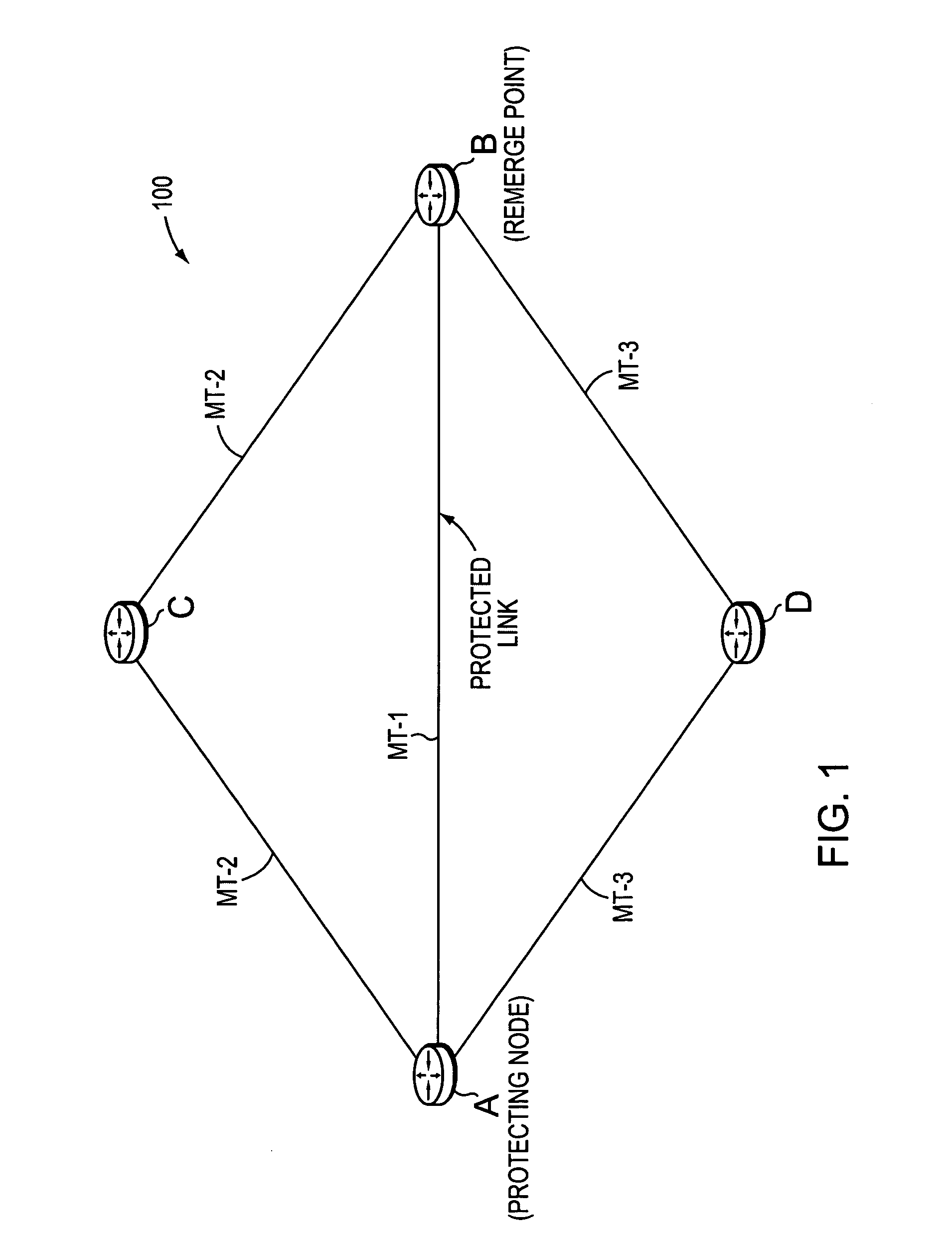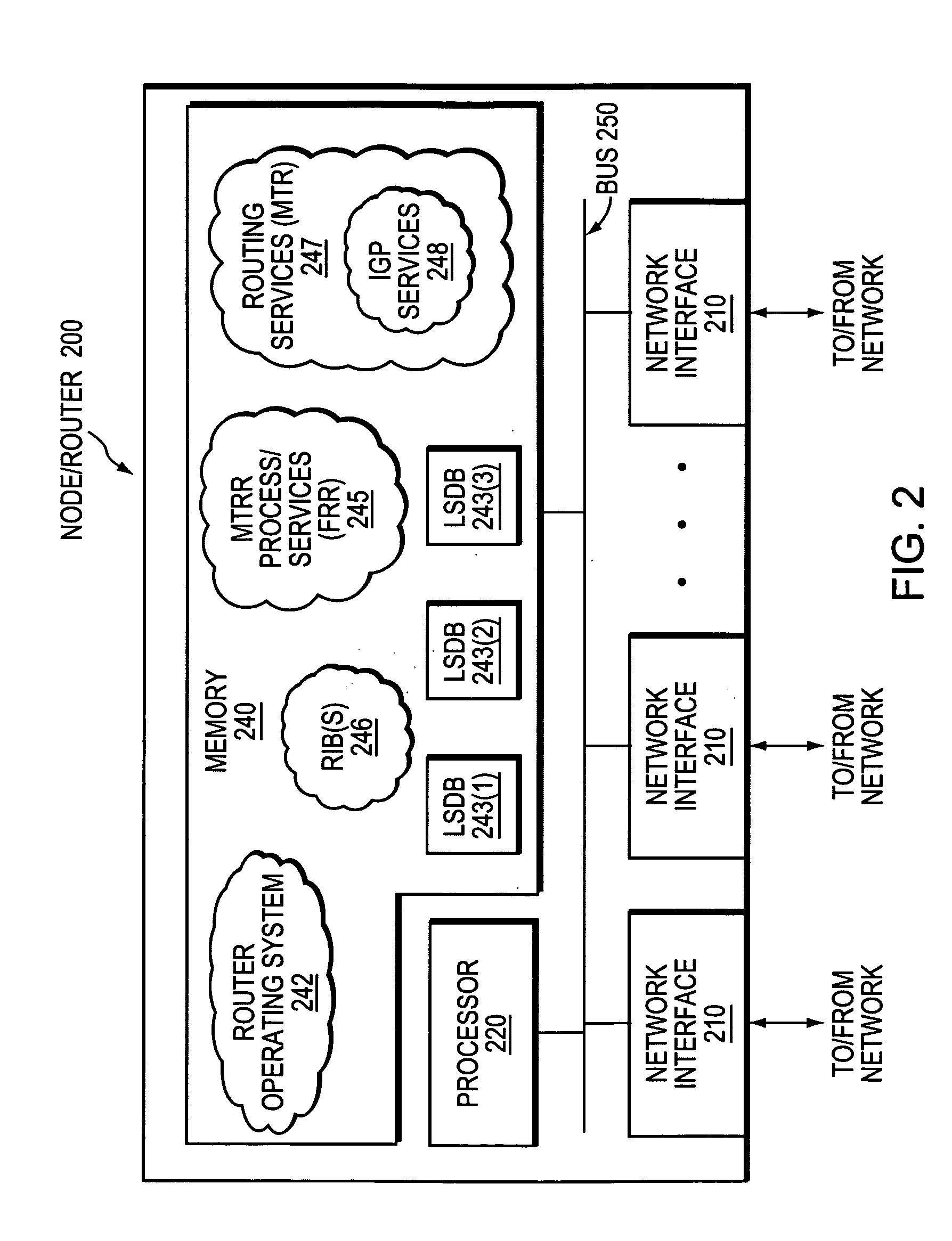Technique for protecting against failure of a network element using Multi-Topology Repair Routing (MTRR)
a network element and multi-topology technology, applied in the field of computer networks, can solve the problems of resetting the network, redirecting traffic, and affecting so as to prevent extended and unwarranted mtr topology cross-over and maintain the integrity of the network
- Summary
- Abstract
- Description
- Claims
- Application Information
AI Technical Summary
Benefits of technology
Problems solved by technology
Method used
Image
Examples
Embodiment Construction
[0031]FIG. 1 is a schematic block diagram of an exemplary computer network 100 that may be advantageously used with the present invention. The network 100 comprises a plurality of interconnected network nodes / devices, such as Routers A-D. The routers may be interconnected by one or more links as shown, such as, e.g., over local area network (LAN) links, wireless LANs, etc., to form the network 100. As used herein, the links connecting the routers are referred to as the two network devices interconnected by the link. For example, B may be reached from A via Link A-B (or, notably, Link B-A). Illustratively, the nodes of the network 100 (Routers A-D) participate in Multi-Topology Routing (MTR), such that each link may belong to one or more specific topologies as described further herein. For instance, Link A-B may be part of a topology “MT-1,” while Links A-C and C-B may be part of “MT-2” and Links A-D and D-B may be part of “MT-3.” Network 100 may be configured as an autonomous system...
PUM
 Login to View More
Login to View More Abstract
Description
Claims
Application Information
 Login to View More
Login to View More - R&D
- Intellectual Property
- Life Sciences
- Materials
- Tech Scout
- Unparalleled Data Quality
- Higher Quality Content
- 60% Fewer Hallucinations
Browse by: Latest US Patents, China's latest patents, Technical Efficacy Thesaurus, Application Domain, Technology Topic, Popular Technical Reports.
© 2025 PatSnap. All rights reserved.Legal|Privacy policy|Modern Slavery Act Transparency Statement|Sitemap|About US| Contact US: help@patsnap.com



